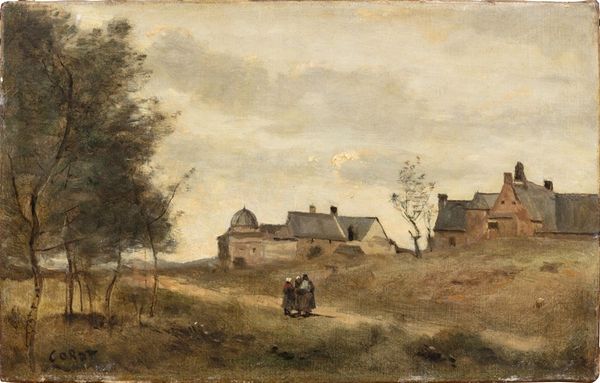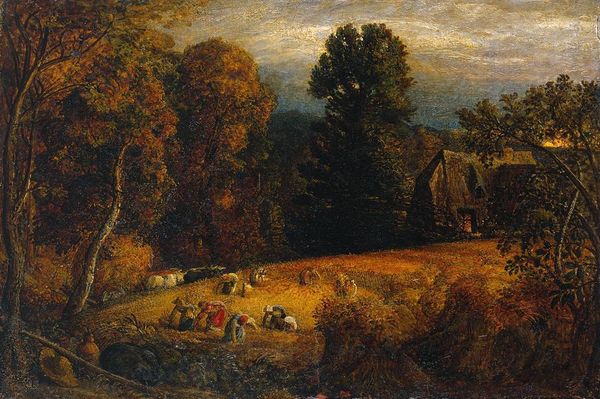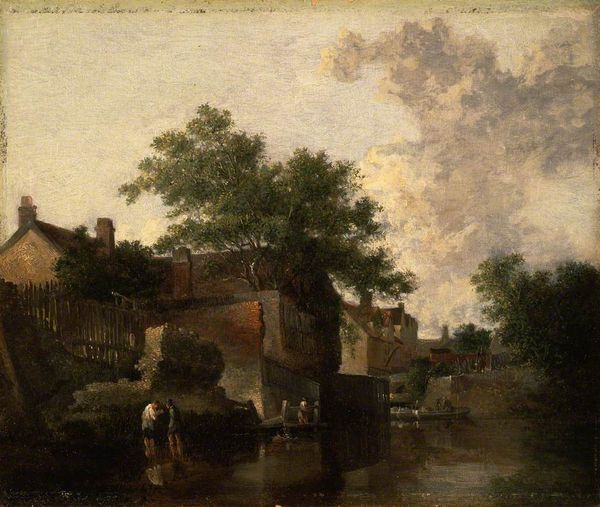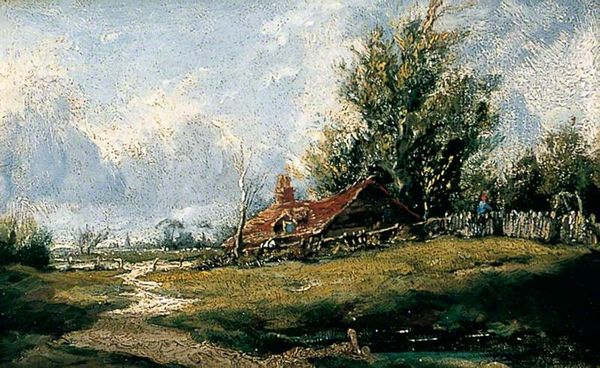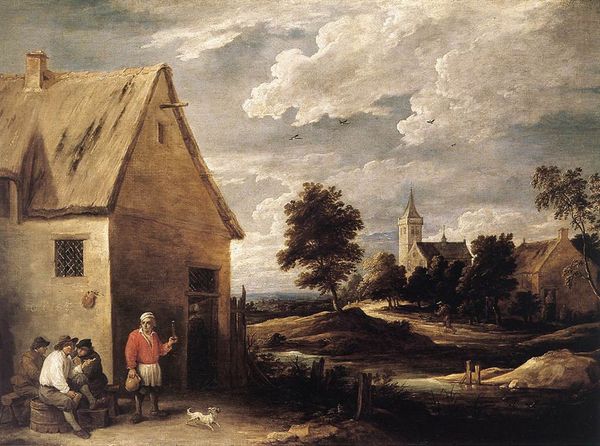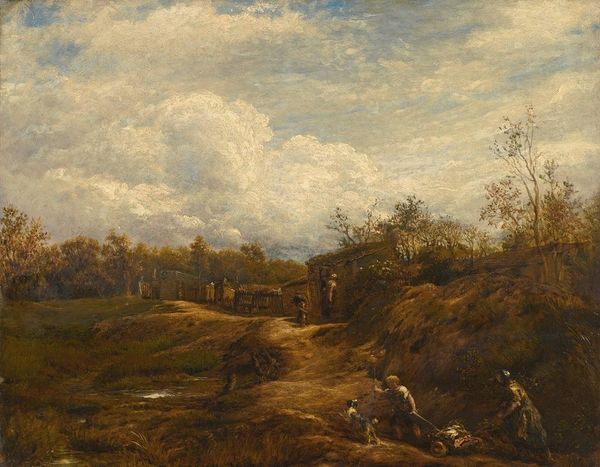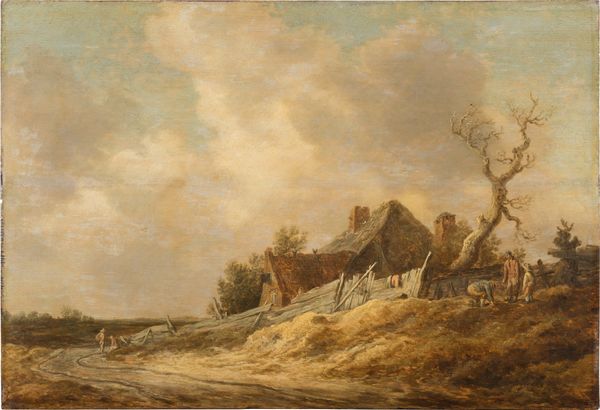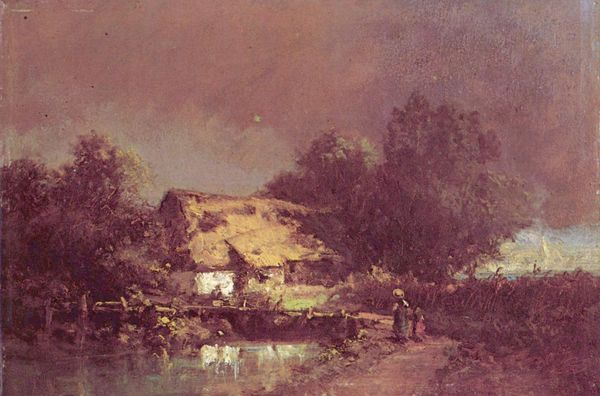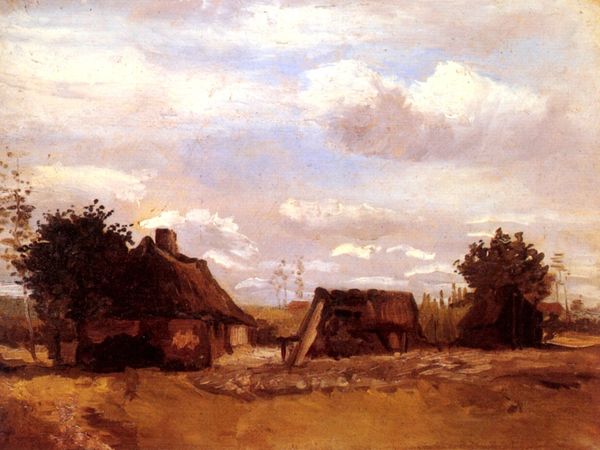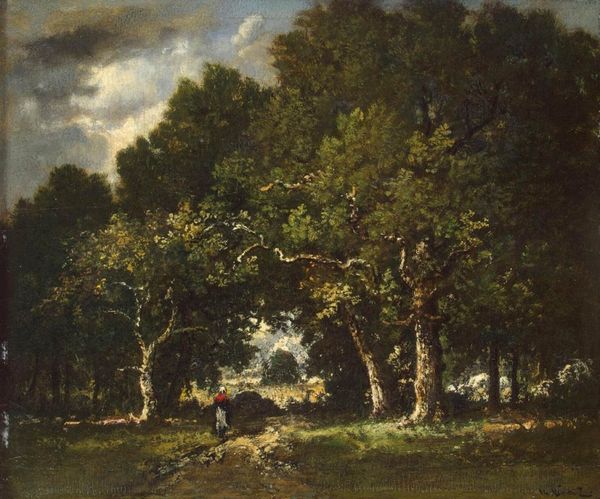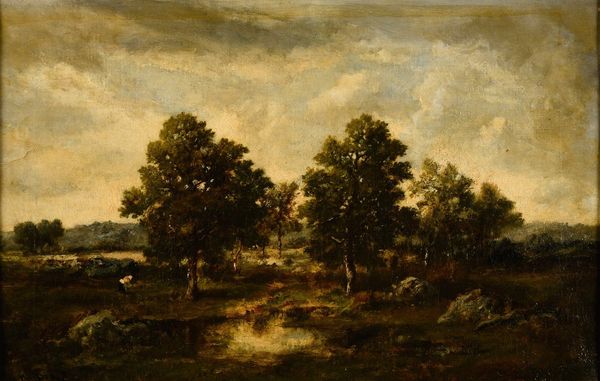
Copyright: Public domain
Curator: This oil on canvas work is entitled "Farm near Quimper," painted by Eugène Boudin in 1855. Editor: The first thing that strikes me is how muted the colors are, almost monochromatic. There's a sense of stillness, a quiet melancholy that permeates the scene. Curator: Indeed. Boudin, a precursor to Impressionism, painted this en plein air. He sought to capture the immediate experience of light and atmosphere in the Breton countryside, an experience made increasingly accessible with the emergence of modern tube paints in the mid-19th century. It’s one of his earlier works. Editor: That solitary figure in the red cloak immediately draws the eye. Red has always been a powerful symbol: passion, sacrifice, lifeblood… Here, it punctuates the somber palette. Does she represent the struggles of rural life or perhaps resilience in the face of hardship? Curator: Considering the period, that dash of red probably functions as a subtle symbol of the continuing traditional culture of rural France set against the rapid urbanization under Napoleon III. Genre paintings such as these often spoke to deeper tensions within French society. Also note the deliberate composition; the buildings almost form a stage-set around this woman. Editor: Looking at those buildings and knowing that spired form can be seen beyond, architectural signs take on a distinct spiritual weight. It suggests stability but also enclosure. The church spire perhaps watches over the community, offering both guidance and control. Curator: That control manifested as an influence by both religious institutions and landowners. Interestingly, Boudin later mentored Monet and urged him to paint outdoors, advocating for direct observation. It's fascinating to see this early attempt at capturing a fleeting moment in time, especially with the use of plein-air painting which would soon redefine artistic conventions. Editor: This scene offers a fascinating view into rural France through the window of one fleeting moment and serves as an exercise for things to come from a generation of landscape painters. Curator: Yes, by appreciating paintings such as these we observe the social underpinnings of the visual imagery being created.
Comments
No comments
Be the first to comment and join the conversation on the ultimate creative platform.

